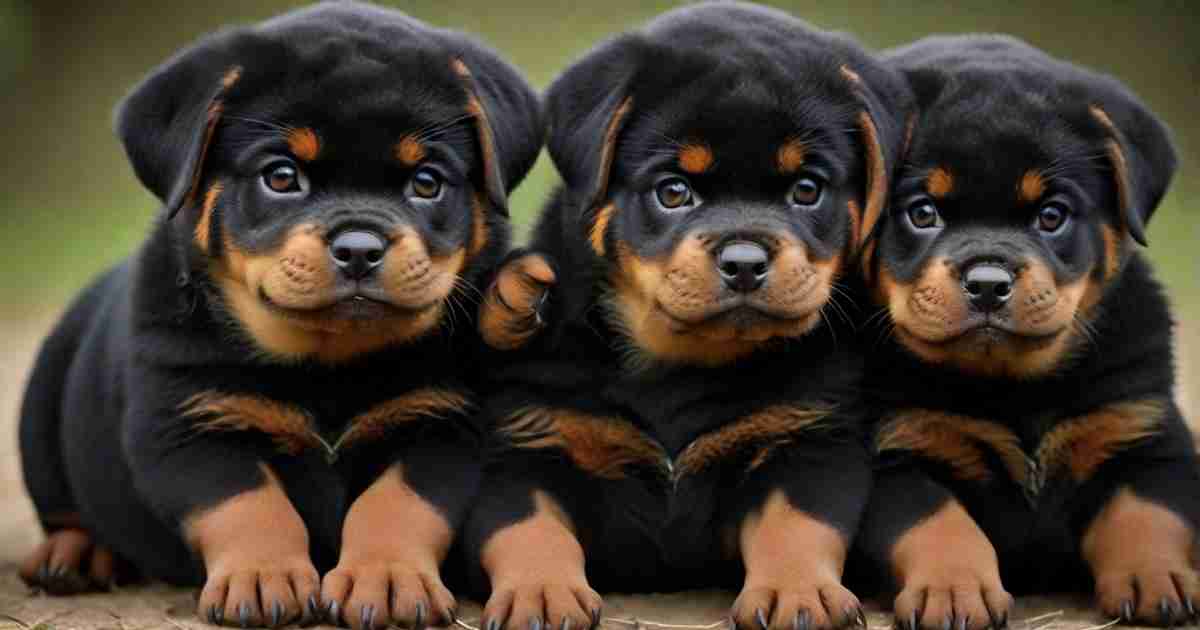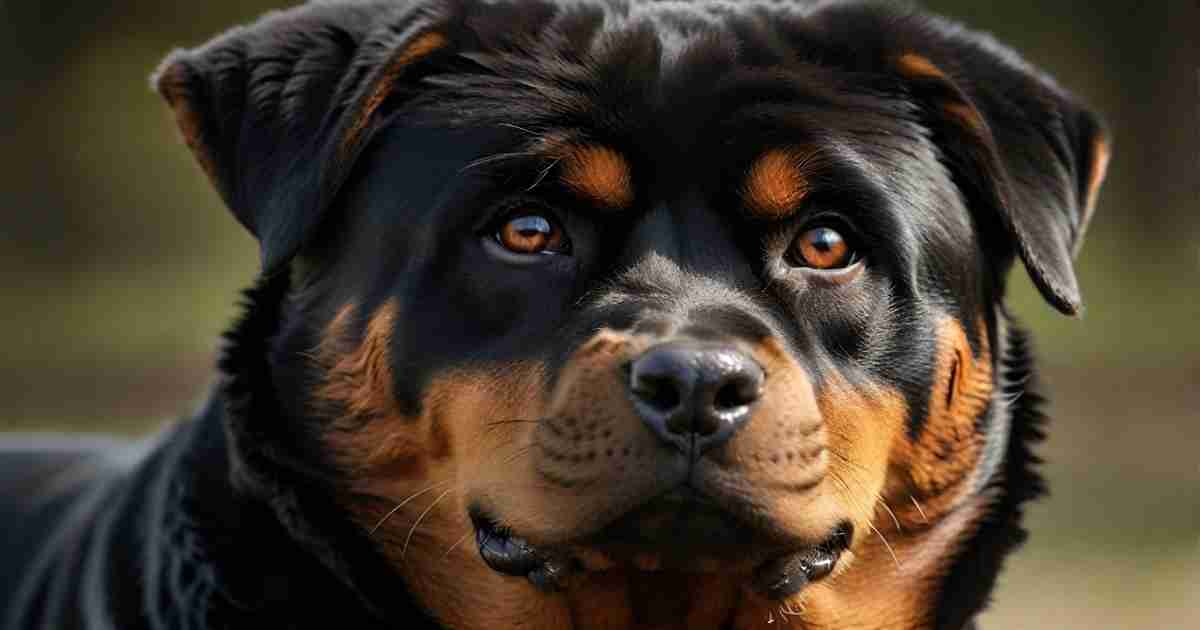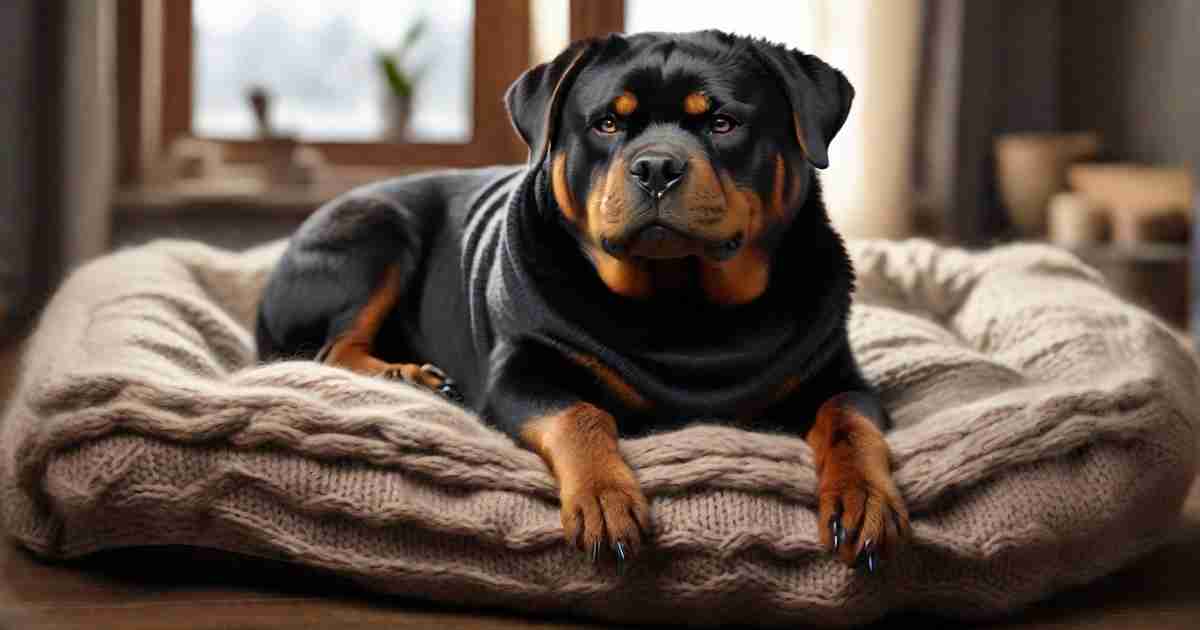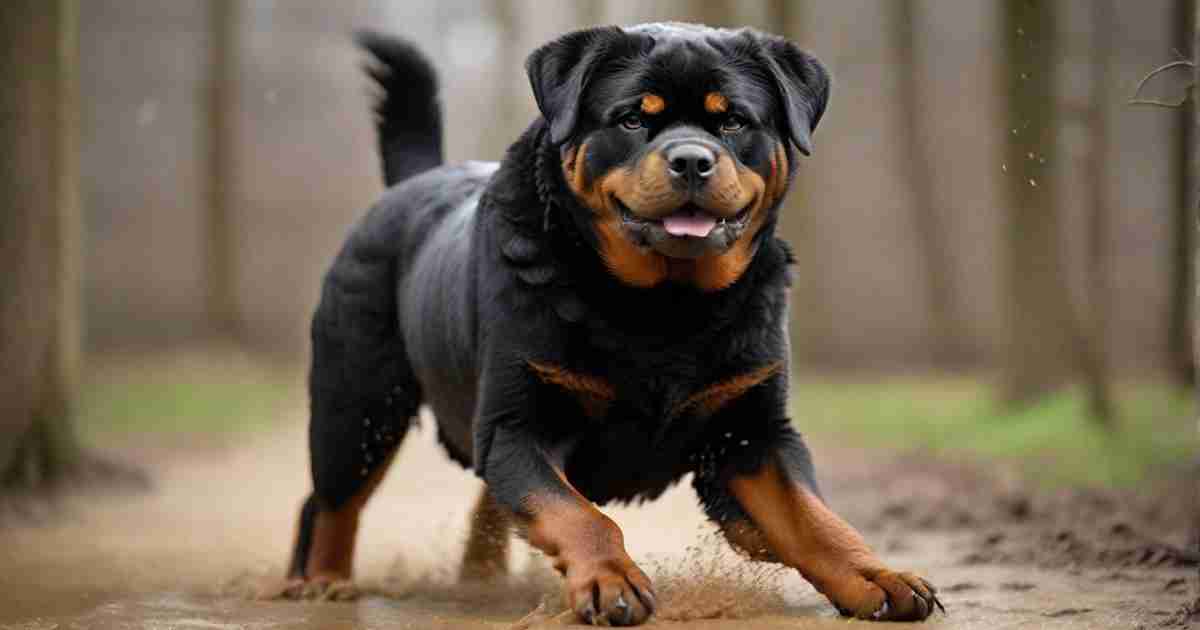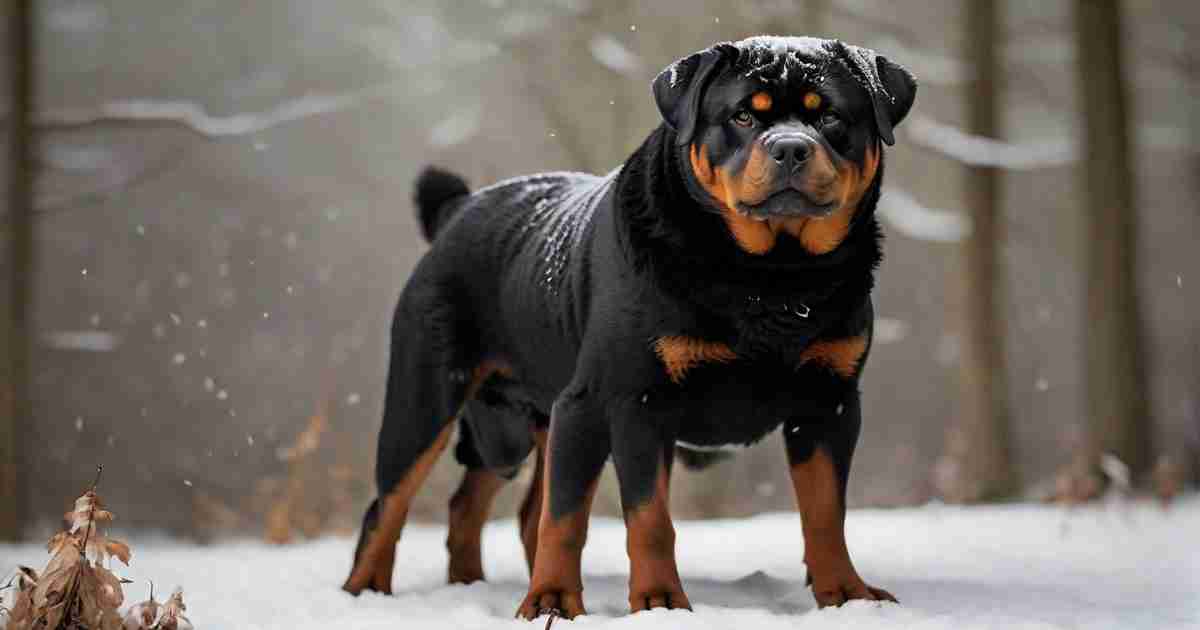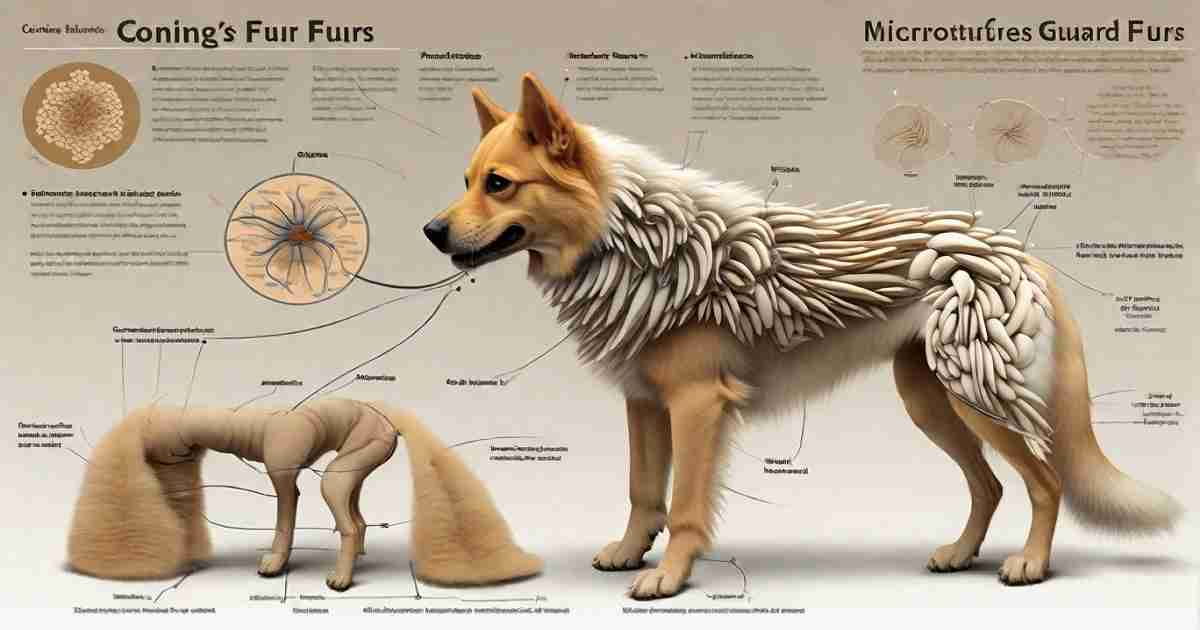Rottweilers are a loved and famous breed of canine recognized for his or her ruggedness, loyalty, and wonderful appearance. They have a dense, double coat that offers them their signature look.
Expert information about their coat is essential to correctly care for a Rottweiler and preserve their health and well-being.
From genetics to grooming to modifications from puppyhood to senior years, gaining in-depth expertise in the fine details of the Rottweiler coat will assist owners in offering excellent care.
The Anatomy of Rottweiler Fur
1. Primary Layers: Guard Hair and Undercoat
A Rottweiler’s fur is made up of two main layers. On the top is the protective layer of guard hairs.
These are longer, rougher hairs that keep the dog dry and shielded. It’s kind of like the Rottie is wearing a permanent raincoat!
Underneath that tough outer shield is the undercoat fur. This fluffy secondary fur layer is shorter and softer, resembling wool. Its job is to insulate the dog’s skin and help regulate body temperature.
The guard hair blocks wind and rain, while the undercoat traps heat next to the skin – together, it’s the perfect winter bundle!
So, Rottweilers dress for all seasons with this great built-in dual coat. The coarse exterior fends off external elements, and the airy underlayer controls the climate close to the skin. No wonder Rotties always look calm and cozy!
2. Purpose and Functionality
The double coat serves an insulator purpose to tolerate cold temperatures and equip the robust operating breed for harsh conditions. The fur layers’ period, texture, and density mixture ensure safety.
Identifying Undercoat in Rottweilers
1. Defining Undercoat in Canine Terms
An undercoat is a secondary layer of fur, including shorter, crimped hairs underneath the longer primary layer of defense hair.
2. Visual and Tactile Cues in Rottweilers
When the topcoat of a Rottweiler is parted, the undercoat is visible, appearing lighter in color, thicker in density, and softer to the touch. During extensive seasonal shedding, the undercoat also shows.
Genetic Influences on Rottweiler Coats
1. Breeding and Coat Variations
Coat characteristics in Rottweilers rely on hereditary traits passed down from breeding lineage.
Factors like fur texture, density, color, and losing tendency reveals natural variation throughout lineages and generations. Responsible breeding specializes in generating wholesome coats.
2. Impact of Ancestry on Undercoat Presence
That said, all purebred Rottweilers incorporate the undercoat gene and essentially usually showcase an undercoat layer. Surroundings, more so than ancestry, govern undercoat thickness and shedding styles throughout the 12 months.
Seasonal Changes in Rottweiler Coats
1. Shedding Patterns Throughout the Year
Rottweilers will “blow” their coats once or twice yearly, often in the Spring and Fall. During these shedding seasons, the undercoat rapidly loosens and falls out in clumps from brushing. Year-round, expect lighter generalized undercoat shedding aside from these seasonal spikes.
2. Environmental Factors Affecting Undercoat Growth
As temperatures change with the seasons, Rottweilers produce less insulating undercoat when warm and more undercoat when cold.
The availability or scarcity of this under fluff regulates body temperature and responds directly to environmental cues like photoperiod. Excess is shorn off through shedding.
Grooming Strategies for Rottweiler Undercoats
1. Regular Brushing Techniques
Use an undercoat rake or slicker brush once or twice weekly to remove loose hairs and prevent matting or caking in the topcoat. Frequent brushing while shedding helps promote a smooth turnover in the undercoat.
2. Importance of Proper Maintenance
Since the undercoat has no natural way of being removed from the Rottweiler while the topcoat stays put, regular human grooming prevents discomfort and skin irritation and supports the equilibrium of the coating cycle.
Pay extra attention to feathering on the chest and legs, which tangles more easily.
Common Misconceptions about Rottweiler Coats
1. Mythbusting Undercoat-Related Misunderstandings
Because of their double coats, many assume Rottweilers must be prone to smelliness or excess drooling.
In reality, well-kept Rottweilers have little detectable odor, and the occasional drool has more to do with soft jowls rather than fur properties.
2. Addressing Stereotypes and Assumptions
Additionally, full tail docking is far less common today, so assumptions about tail length related to working roles often miss the mark on appropriate modern practices centred on dog welfare. Tails or no tails, Rottweiler undercoats remain fundamentally unchanged.
Health Considerations and Undercoat Care
1. Impact of Undercoat on Rottweiler Health
When properly cared for, the Rottweiler undercoat offers insulating benefits and does not pose inherent health risks.
However, neglecting coat care can lead to skin problems over time. Additionally, their dense coats make them more heat-sensitive than other breeds.
2. Signs of Undercoat-Related Issues
Warning signs of undercoat-related problems include excessive shedding, flakiness, odor, matting, hot spots, losing pigment, and overall poor condition.
Schedule veterinary skin checks if these red flags appear outside the norm of healthy shedding seasons.
What color is a Rottweiler undercoat?
As we learned earlier when exploring the question, do rottweilers have an undercoat?” yes, Rottweilers have a distinctive double coat composed of a coarse outer layer of fur and a soft, downy undercoat below it.
But what color is a Rottweiler undercoat? Typically, Rottweiler undercoats are a lighter shade than the jet-black guard hairs of the topcoat. Up close, their undercoat may appear:
- Beige
- Tan
- Rust
- Muted mahogany
This lighter undercoat should remain within the acceptable range of colors occurring naturally in purebred Rottweiler coats.
Extreme undercoat color variation may indicate issues:
- Patches of white
- Other inconsistent pigmentation
These variations are not up to breed standards. But in general, the Rottweiler undercoat presents a lighter background variation of the typical black-and-tan Rottweiler coloration.
Through the outer black fur, glimpses of a lighter undercoat giving off almost a reddish-brown glow are perfectly normal and healthy for this breed.
What type of coat does a Rottweiler have?
When answering the question, do rottweilers have an undercoat? We learned that Rottweilers have double coats. To expand further – what type of coat does a Rottweiler have exactly?
Rottweilers have:
- A double coat
- This means two distinct layers of fur:
- An undercoat
- An overcoat
- This means two distinct layers of fur:
- An undercoat that is thick, soft insulation
- An outer guard coat that is:
- Long
- Coarse
- Water-resistant
The two coats together create the ideal Rottweiler coat:
- Built for harsh weather endurance
- Enables working roles like:
- Herding
- Guarding
- Signature look of the breed
So, in summary, Rottweilers specifically have double coats with a uniquely functional balance of protective and insulator properties – all thanks to the combination of undercoat and overcoat.
This two-layer fur construction helps define the recognizable Rottweiler as extraordinarily sturdy.
Why does my Rottweiler have a white undercoat?
If you were asking, do rottweilers have an undercoat – the answer is yes. But upon closer inspection, you may discover your Rottweiler has an odd white undercoat.
What explains this? Typically, Rottweilers should have undercoats that match or are slightly lighter than their jet-black outer guard hairs. Reasons for that startling white undercoat include:
- Mixed breeding– Crossbred lineage with another breed could introduce recessive genes that produce white fur.
- Partial albinism– Lack of pigment cells can prevent parts of the undercoat from attaining color.
- Scarringor vitiligo – Past skin trauma or disease may leave vulnerable hair follicles only able to grow white fur.
While startling, a white Rottweiler undercoat alone does not necessarily indicate poor health.
But explore your Rottie’s ancestry and skin condition for explanations. Ask your vet whether to investigate any worrisome underlying issues causing this highly unusual coat mutation.
At what temperature does a Rottweiler need a coat?
When we ask, do rottweilers have an undercoat? The resounding answer is yes.
This undercoat serves as natural insulation to help Rottweilers withstand cold temperatures. But at what temperature does a Rottweiler need a coat for additional warmth?
- In below-freezing weather (under 32° F / 0°C), a protective dog coat assists their double fur layers by providing supplementary padding when outdoors
- Smaller or senior Rottweilers benefit from coats in the cold
- Indoors mostly, but a coat makes potty breaks more pleasant
- The coat Threshold temperature depends on the following:
- Individual dog
- Coat thickness
- Body Condition
So, while Rottweilers have formidable natural coats with their trademark undercoat insulation, their owners can augment that inherent cold weather tolerance with dog jackets during frigid temperatures or icy winds. Those extra layers provide valuable defence against the elements.
Expert Insights: Interviews with Veterinarians and Breeders
1. Professional Perspectives on Rottweiler Coats
To benefit from extended insights from arms-on experts, interviews were conducted with veterinarians.
Dr. Sarah Stone and breeder Monika Weber explore real-world enjoyment with Rottweiler coats.
2. Advice on Undercoat Management
Each Dr. Stone and Ms. Weber advocate 12 months-round brushing with a metal comb and undercoat rake, noting this as imperative all through seasonal shedding spikes.
They propose bathing handiest when vital and using gentle dog shampoos to keep coat oils.
Conclusion
In summary, Rottweilers assuredly possess signature undercoats as part of their double fur construction, which offers the functional benefits of a hardworking breed.
With sound grooming and care practices, owners can keep their Rottweilers coats healthy through all life stages.
The striking coat of a Rottweiler symbolizes the essence of this loyal, multi-talented breed.
By better understanding the structure, purpose and care for their special fur, owners can nurture this distinguishing feature and forge deeper bonds through conscientious upkeep of coat condition.
FAQs
Do all Rottweilers have undercoats?
- Technically, all purebred Rottweilers, even rare variations, contain the genetics to produce an undercoat layer, though thickness and shedding tendencies fluctuate.
How often should Rottweilers be groomed?
- Plan to thoroughly brush Rottweilers 1-2 times per week year-round, increasing frequency to daily during heavy shedding periods. Trim nails as needed.
Are there any health risks associated with undercoats?
- On the whole, Rottweiler undercoats themselves pose negligible risks. However, inadequate grooming can lead to secondary skin issues, so appropriate brushing is preventative medicine against discomfort, irritation, and infection.
What is the rarest color of Rottweiler?
- The rarest color of Rottweiler is a true blue coat, lacking black fur pigment.
At what age do Rottweilers go GREY?
- Rottweilers generally start to show grey hairs around ages 5-6 years old, primarily on the muzzle.
Do rottweilers have an undercoat or fur?
- Rottweilers have both – an undercoat layer along with an overcoat of fur.
How long do rottweilers shed?
- How long Rottweilers shed depends on the season – shedding excessively during blowouts in spring and fall but much less year-round.
